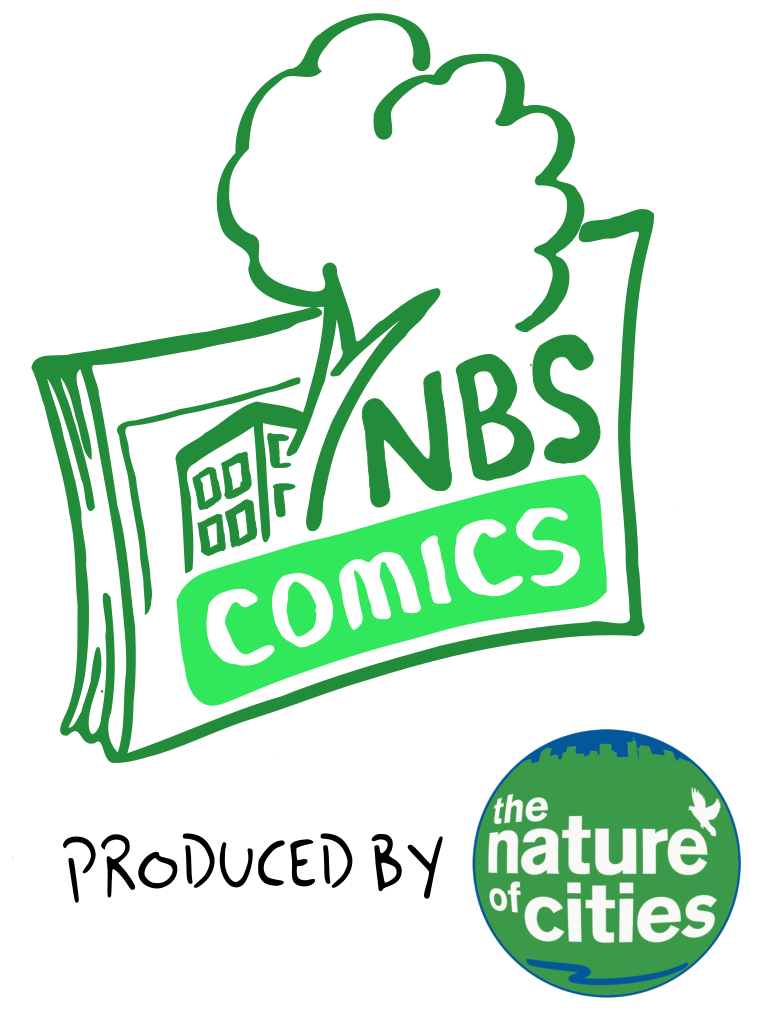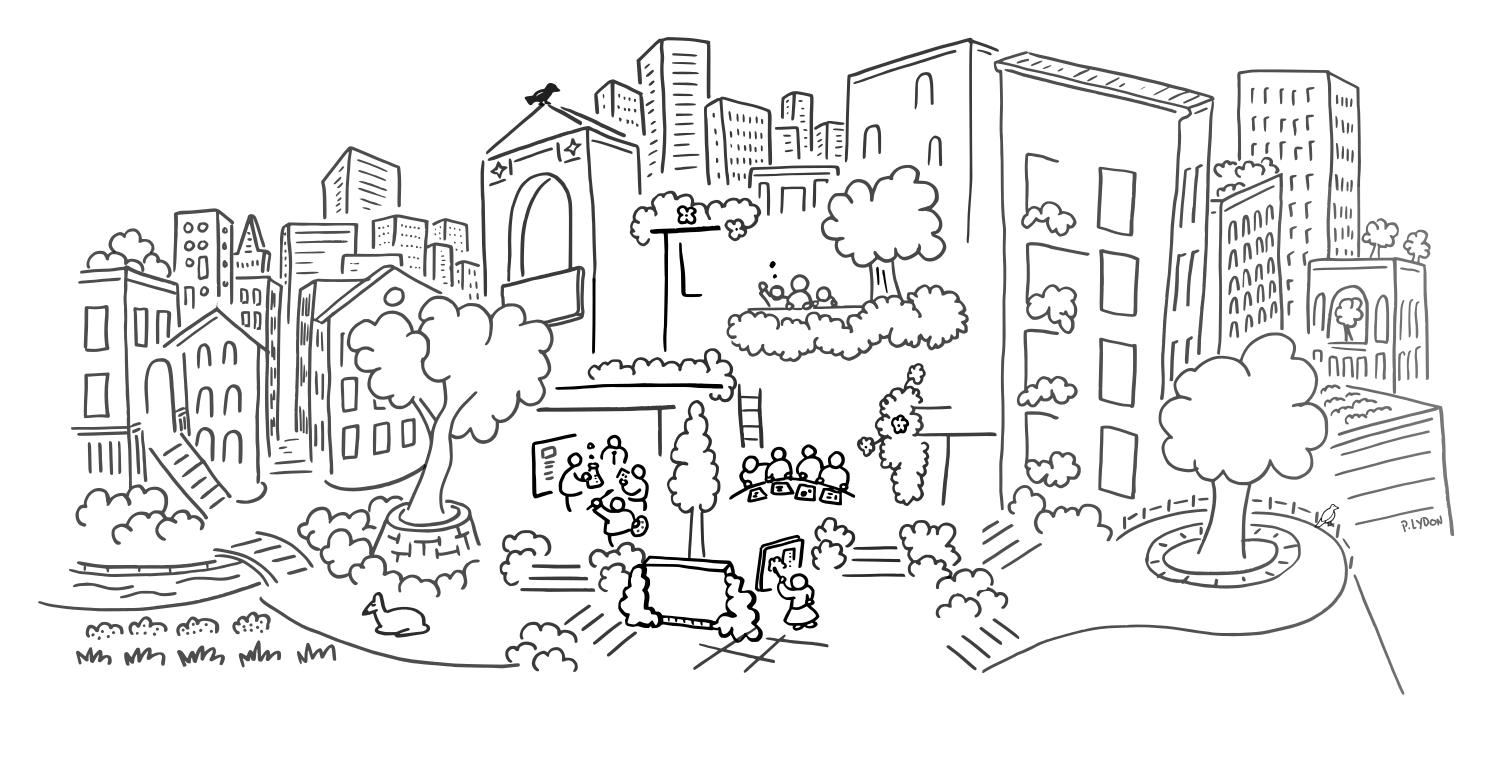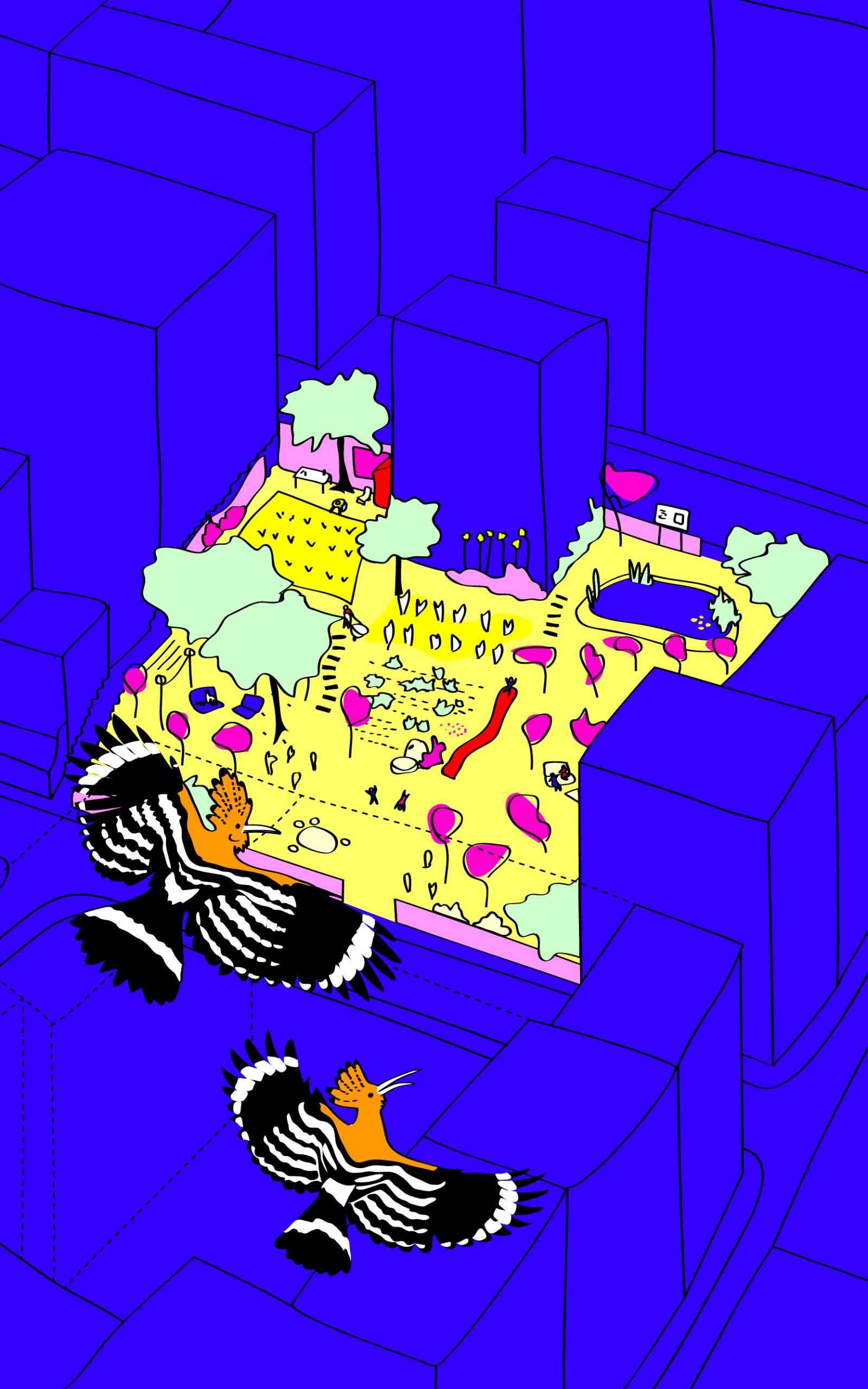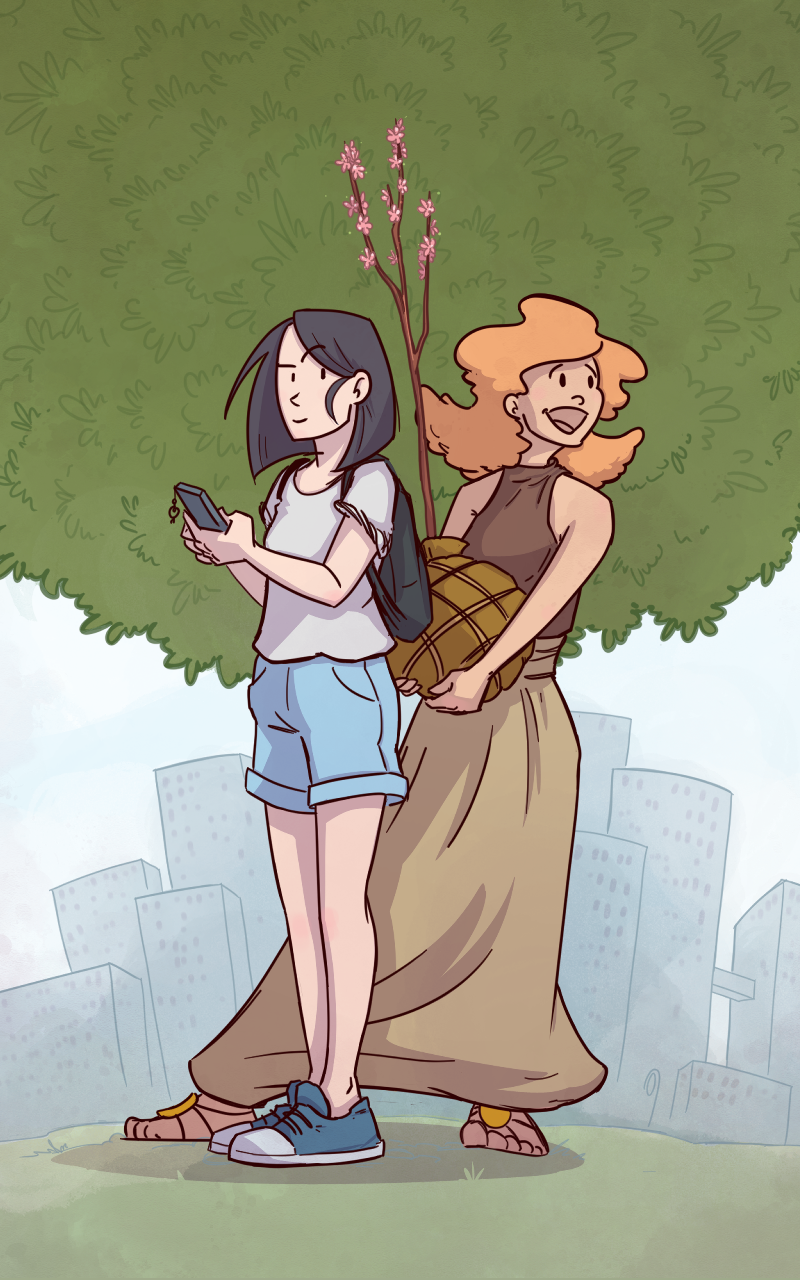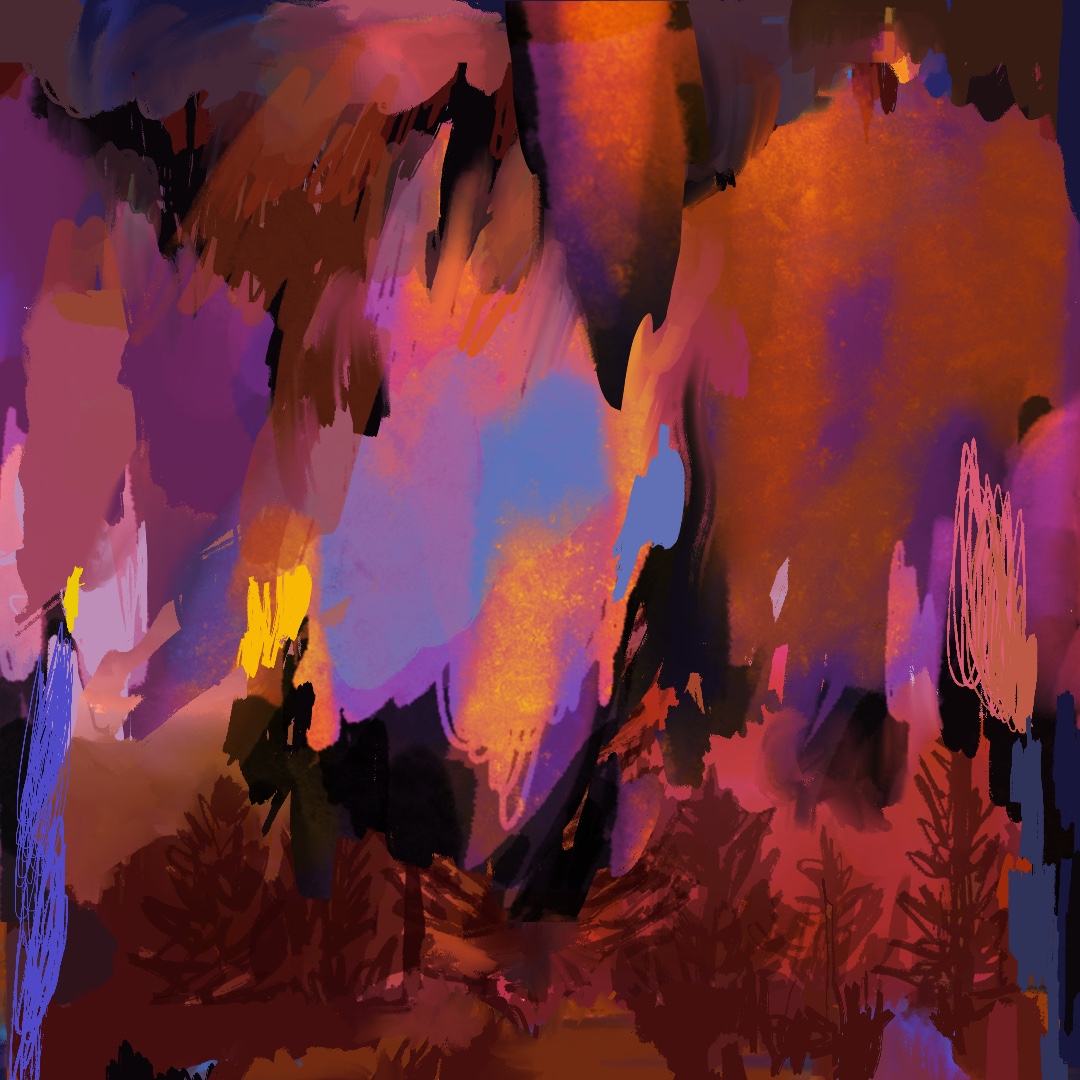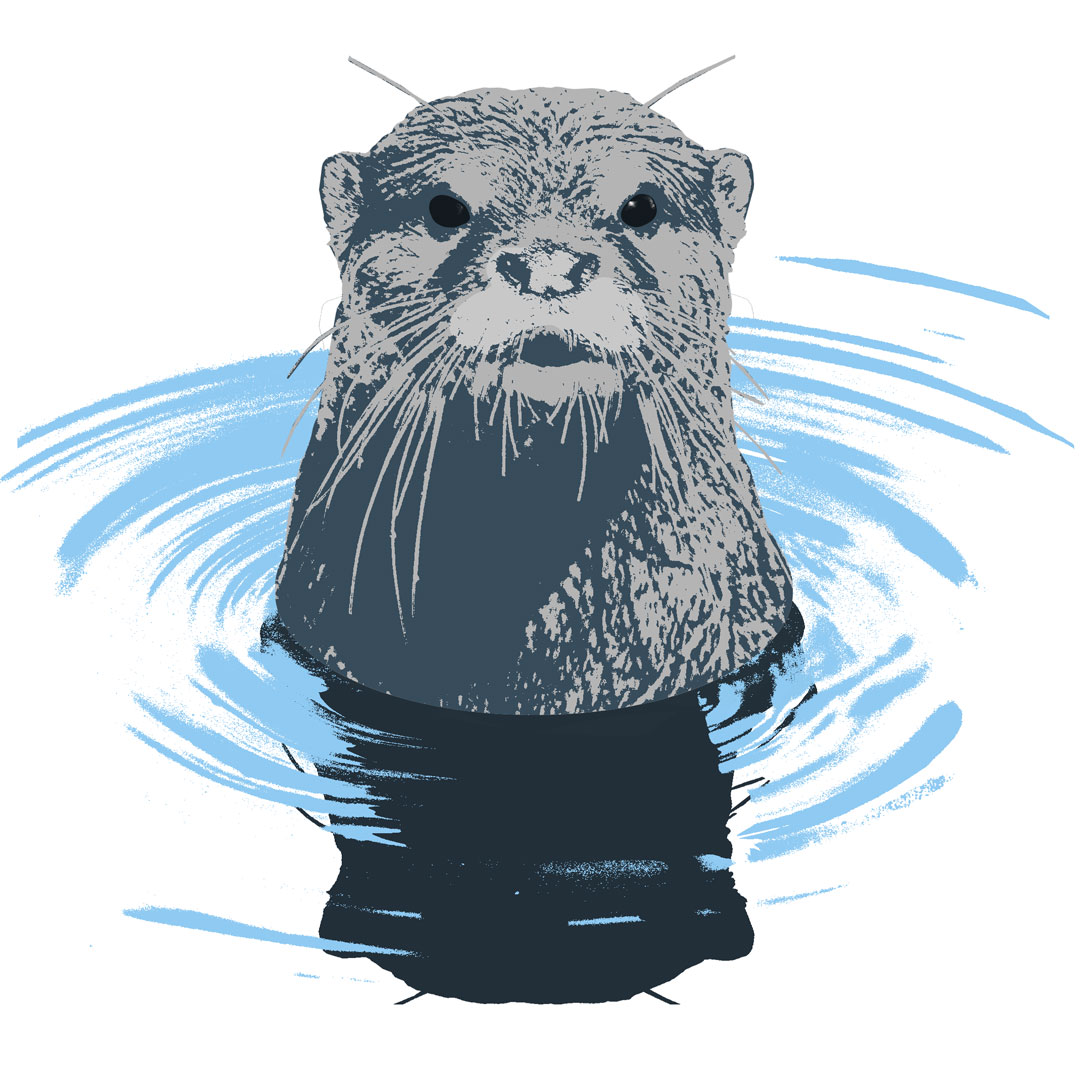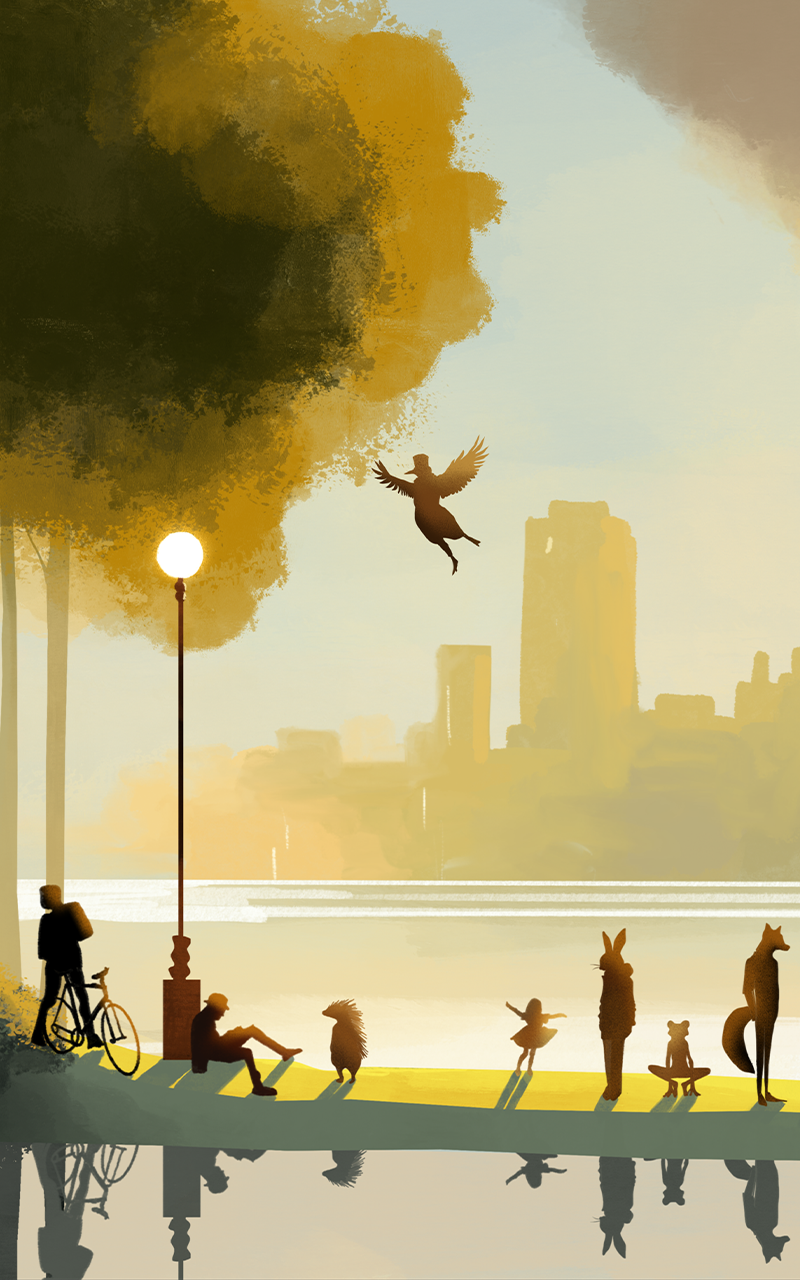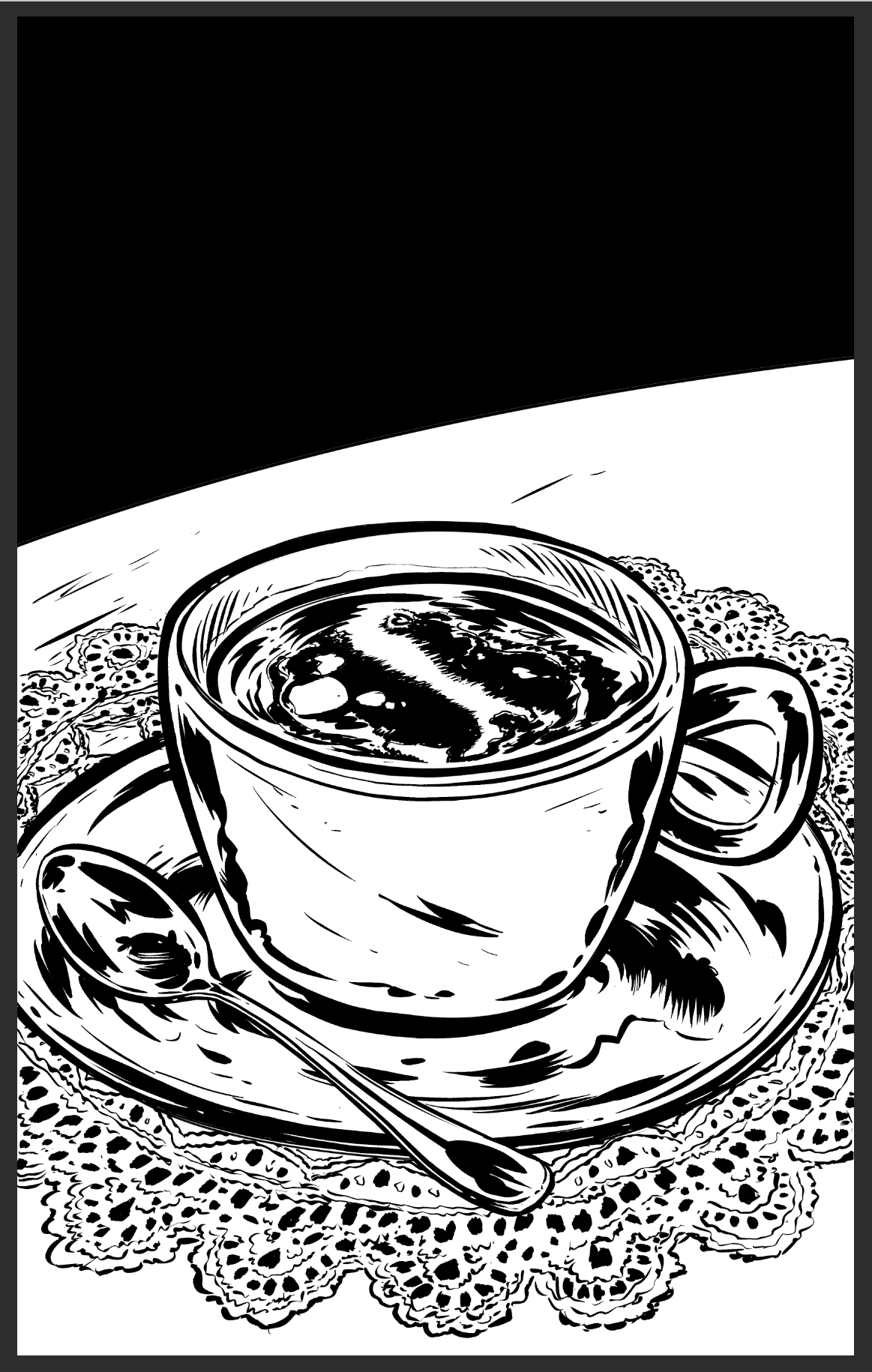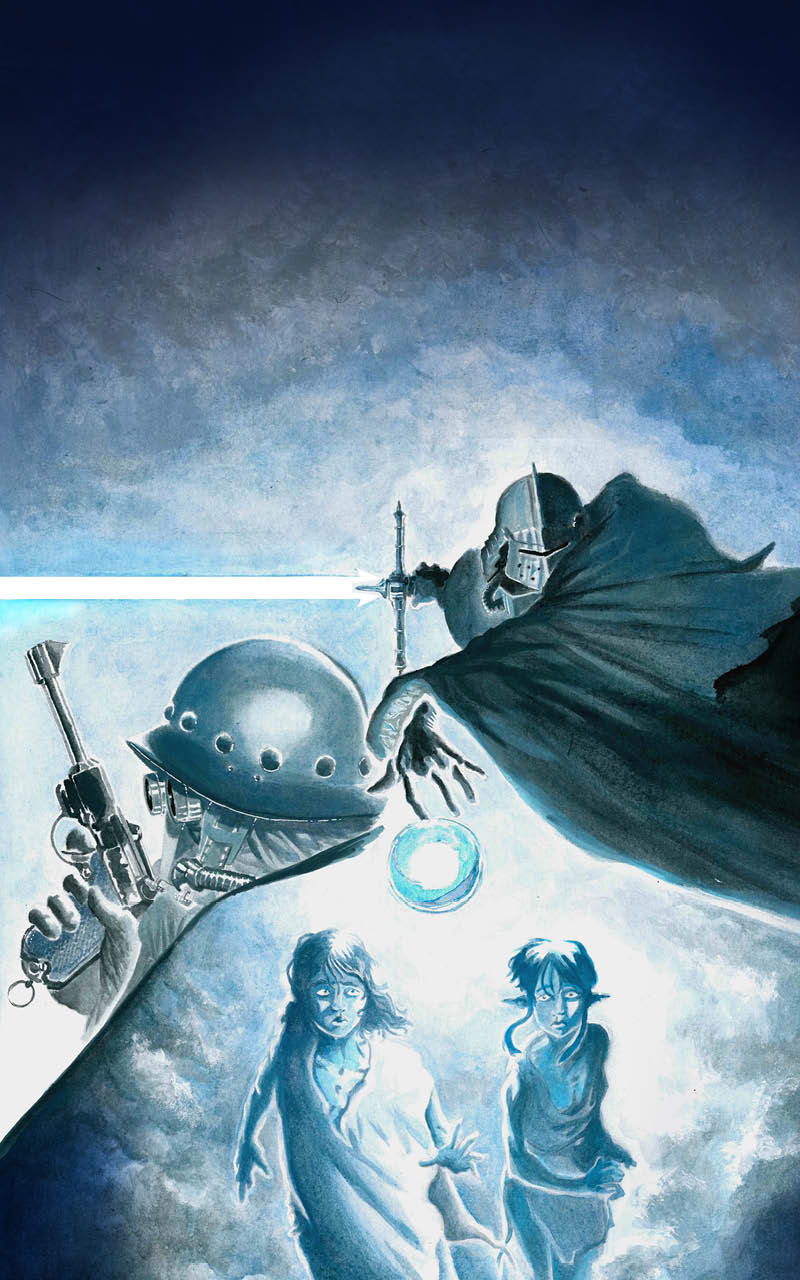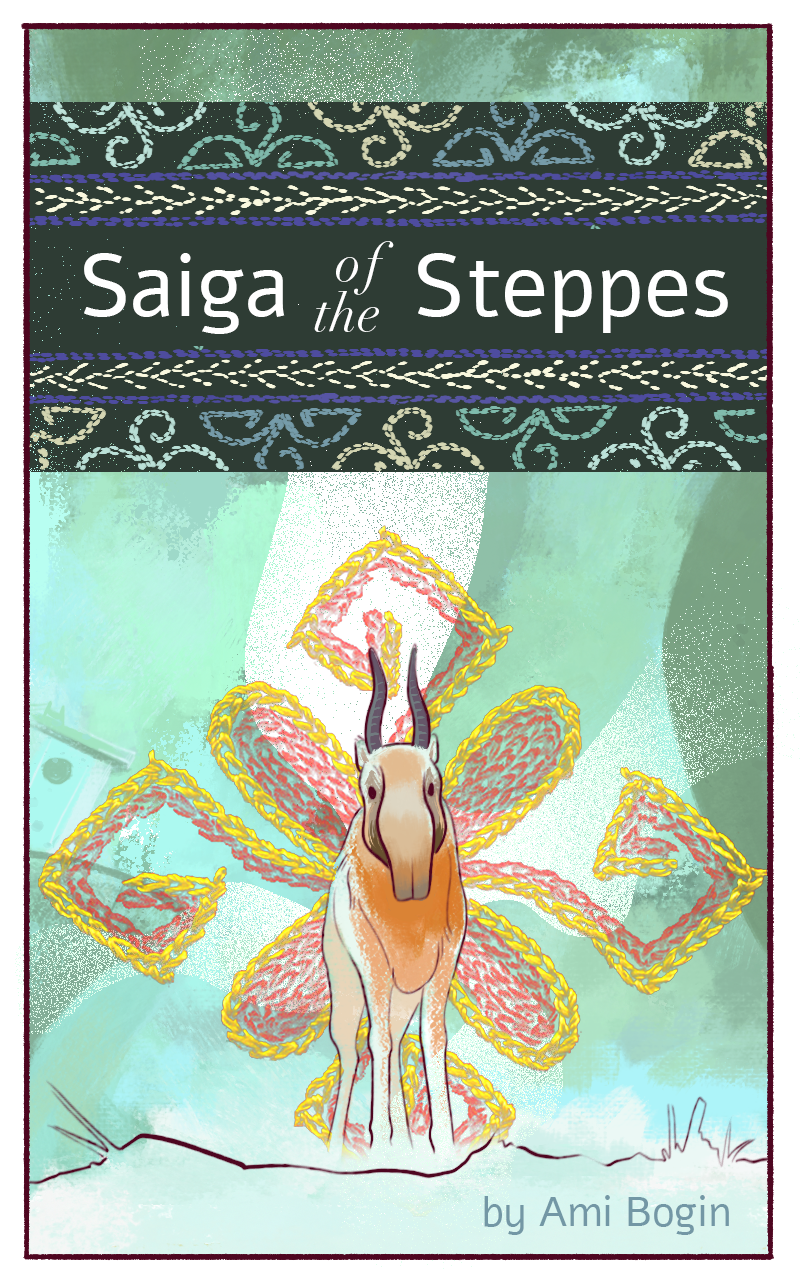
Saiga of the Steppes
by Ami Bogin
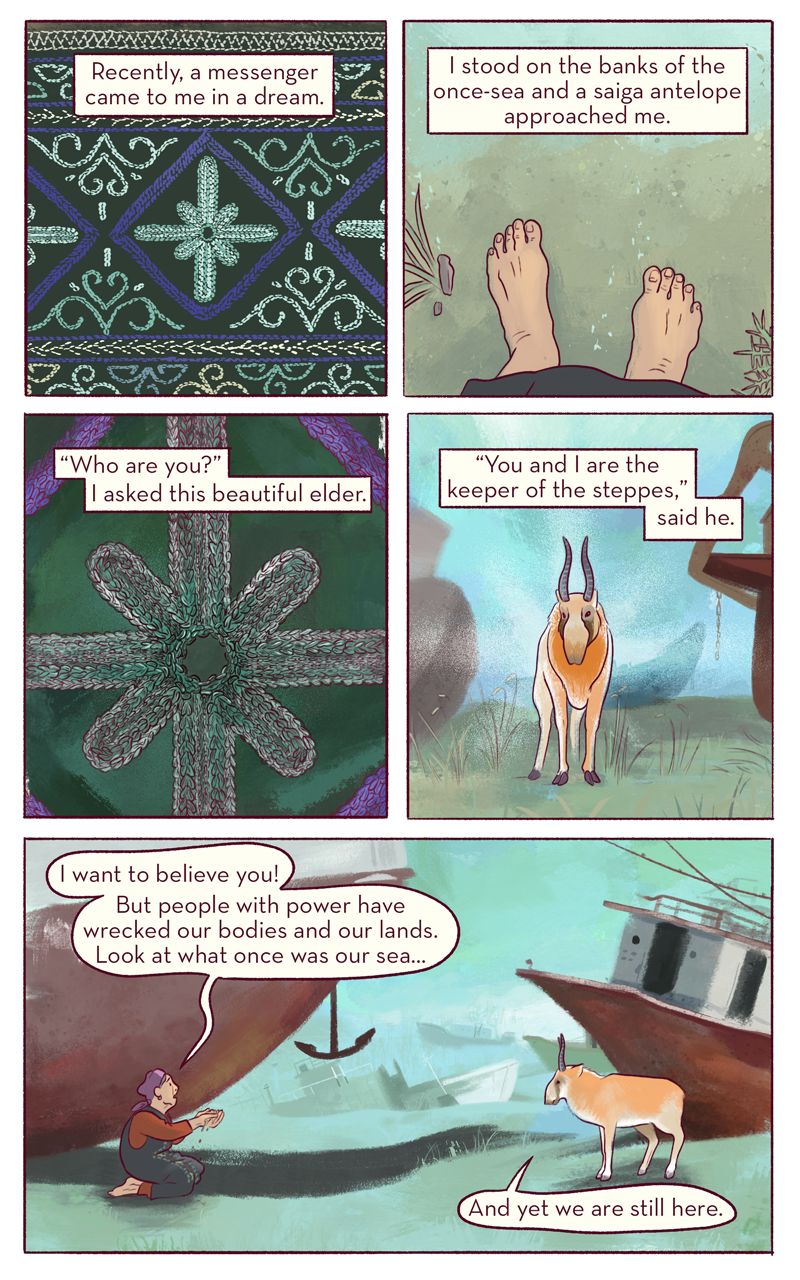
I stood on the banks of the once-sea and a saiga antelope approached me.
“Who are you?” I asked this beautiful elder.
“You and I are the keeper of the steppes,” said he.
Main Character: I want to believe you! But people with power wrecked our bodies and our lands. Look at what once was our sea…
Saiga: And yet we are still here.
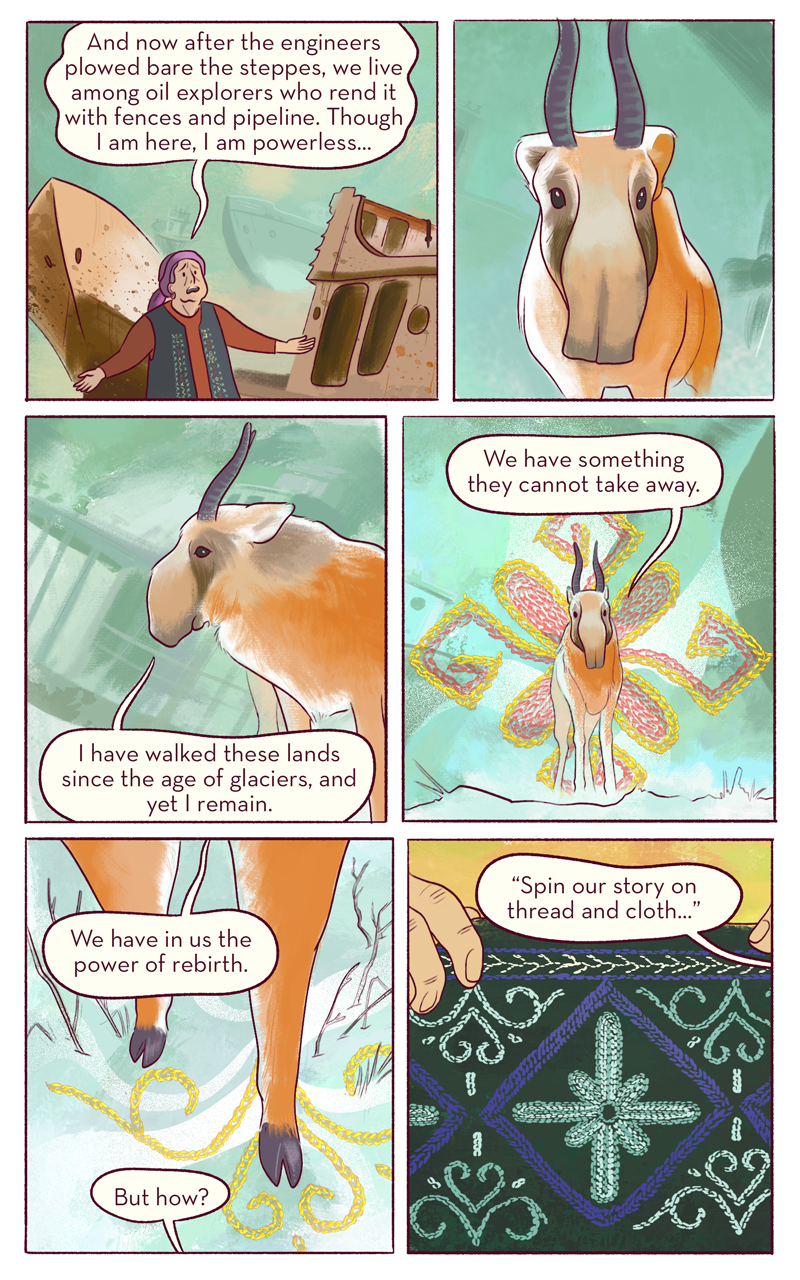
Saiga: I have walked these lands since the age of glaciers, and yet I remain.
We have something they cannot take away.
We have in us the power of rebirth.
Main character: But how?
“Spin our story on thread and cloth…”
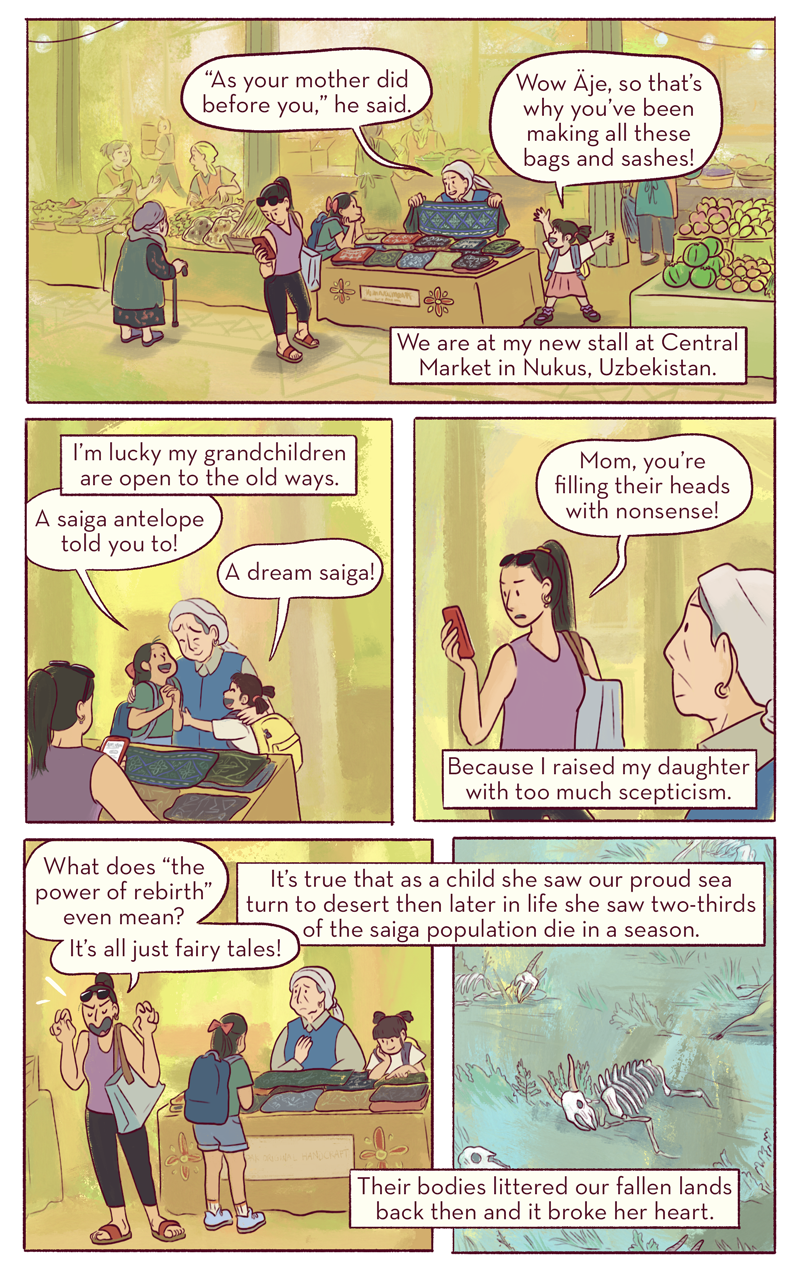
Baina: Wow Äje, so that’s why you’ve been making all these bags and sashes!
Narration: We are at my new stall at Central Market in Nukus, Uzbekistan.
I’m lucky my grandchildren are open to the old ways.
Elya: A saiga antelope told you to!
Baina: A dream saiga!
Mom: Mom, you’re filling their heads with nonsense!
Narration: Because I raised my daughter with too much scepticism.
Mom: What does “the power of rebirth” even mean?
It’s all just fairy tales!
Narration: It’s true that as a child she saw our proud sea turn to desert then later in life she saw two-thirds of the saiga population die in a season.
Their bodies littered our fallen lands back then and it broke her heart.
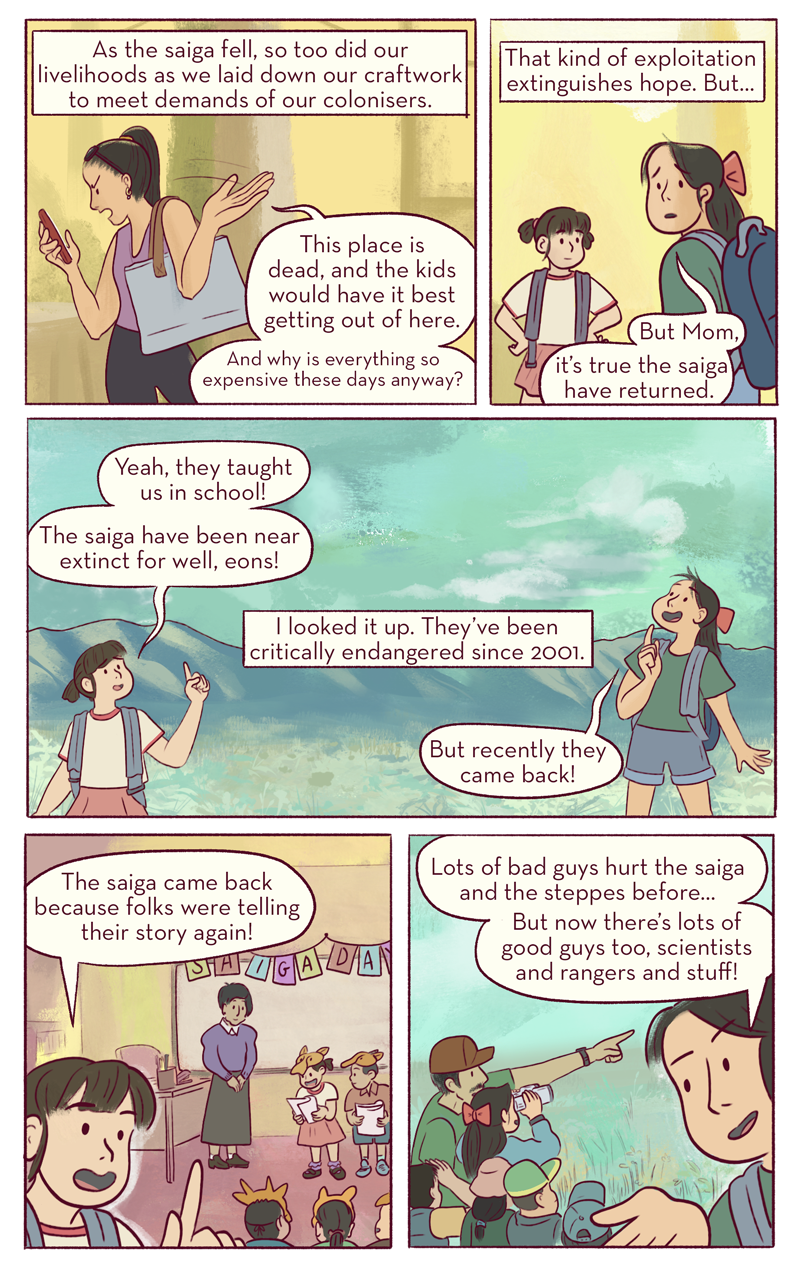
Mom: This place is dead, and the kids would have it best getting out of here.
And why is everything so expensive these days anyway?
That kind of exploitation extinguishes hope. But…
Elya:
But Mom, it’s true the saiga have returned.
Baina:
Yeah, they taught us in school!
The saiga have been near extinct for well, eons!
Narration: I looked it up. They’ve been critically endangered since 2001.
Elya: But they recently came back!
Baina: The saiga came back because folks were telling their story again!
Elya: Lots of bad guys hurt the saiga and the steppes before… But now there’s lots of good guys too, scientists and rangers and stuff!
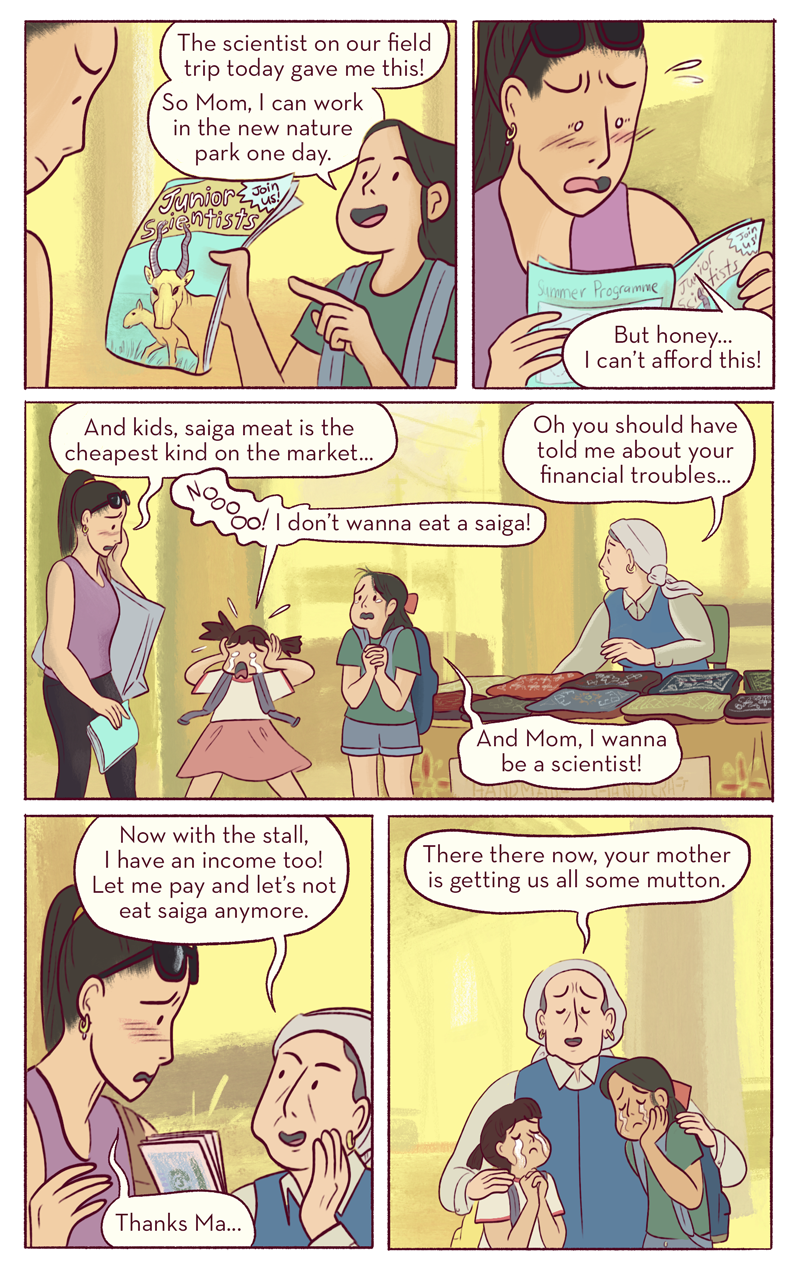
So Mom, I can work on the new nature park one day.
Mom: But honey… I can’t afford this!
Mom: And kids, saiga meat is the cheapest kind on the market…
Baina: Noooo!!! I don’t wanna eat a saiga!
Elya: And mom, I wanna be a scientist!
Main Character: Oh you should have told me about your financial troubles…
Main character: Now with the stall, I have an income too! Let me pay and let’s not eat saiga anymore.
Mom: Thanks ma…
Main Character: There there now, your mother is getting us all some mutton.
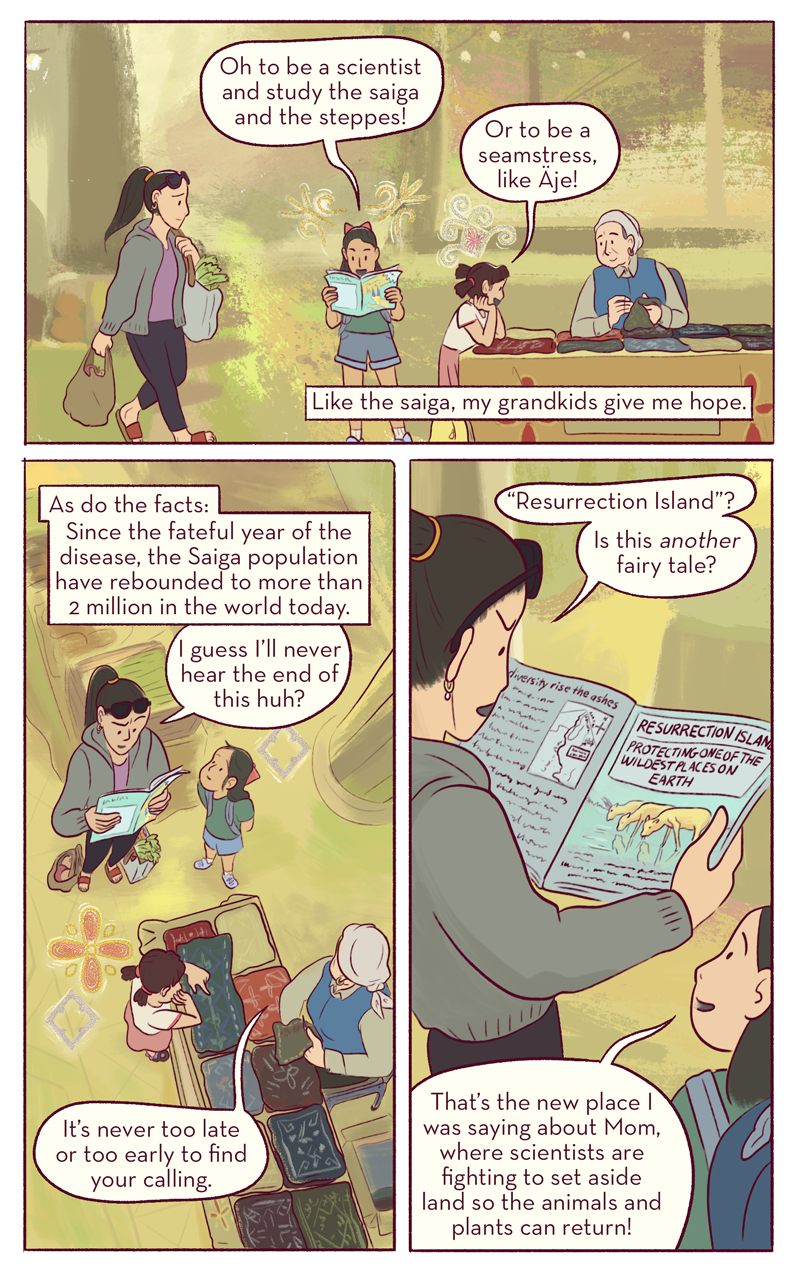
Baina: Or to be a seamstress, like Äje!
Narration: Like the saiga, my grandkids give me hope.
Narration: As do the facts: Since the fateful year of the disease, the Saiga population have rebounded to more than 2 million in the world today.
Mom: I guess I’ll never hear the end of this huh?
Main Character: It’s never too late or too early to find your calling.
Mom: Resurrection Island? Is this another fairy tale?
Elya: That’s the new nature reserve I was saying about Mom, where scientists are fighting to set aside land so the animals and plants can return!
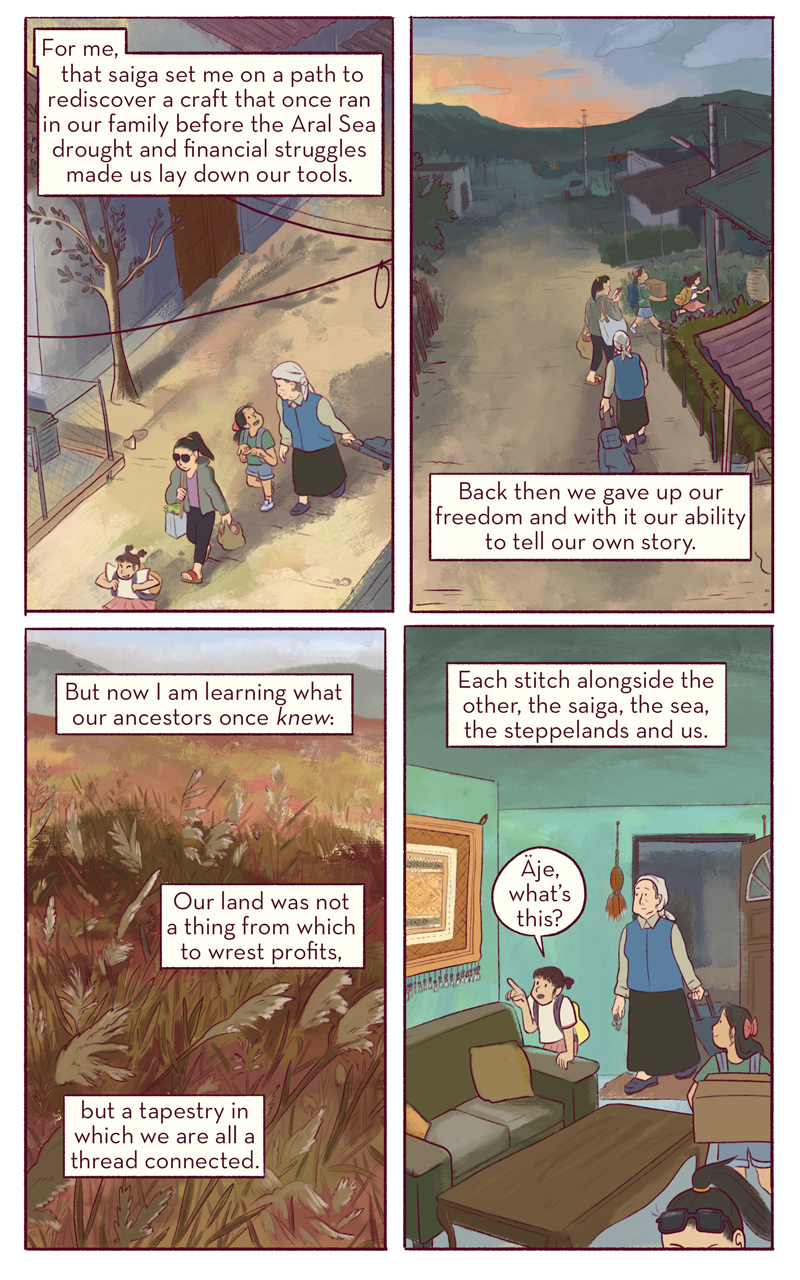
Back then we gave up our freedom and with it our ability to tell our own story.
But now I am learning what our ancestors once knew:
Our land was not a thing from which to wrest profits,
but a tapestry in which we are all a thread connected.
Each stitch alongside the other, the saiga, the sea, the steppelands and us.
Elya: Äje what’s this?
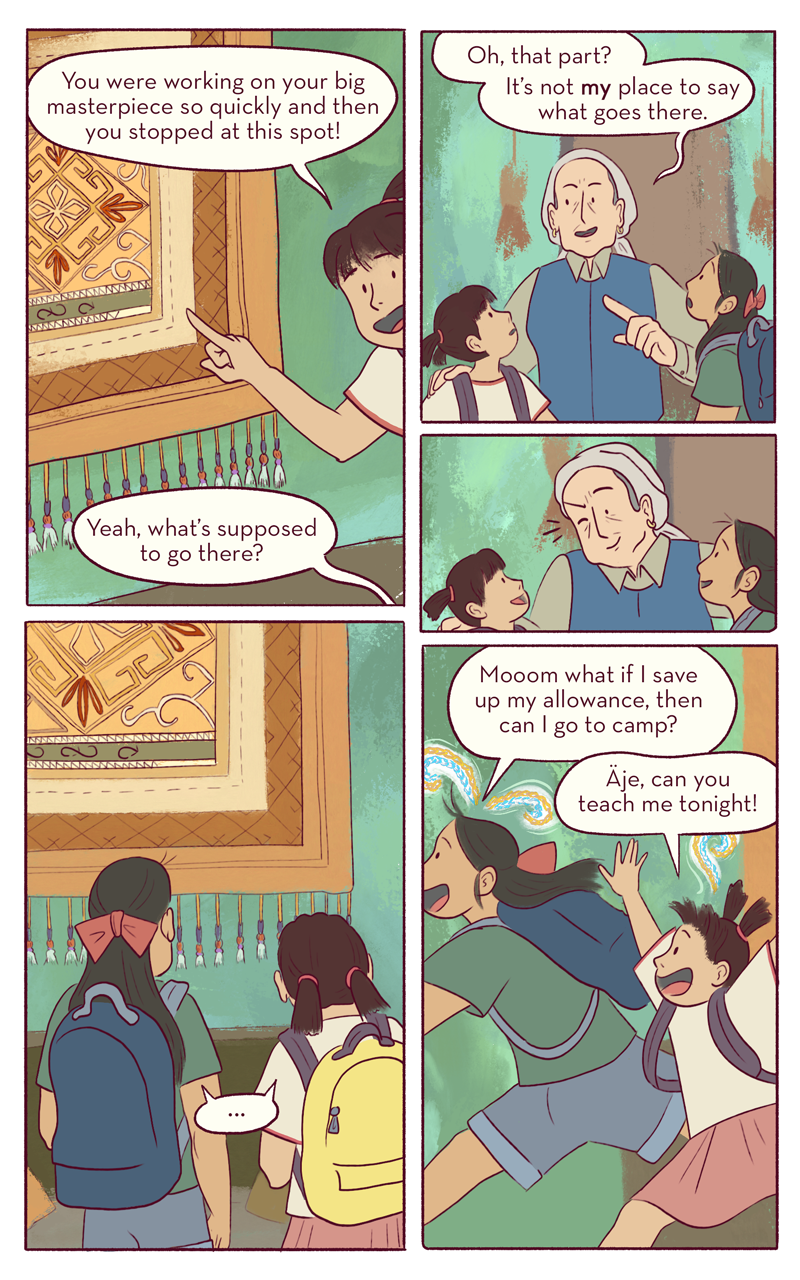
Elya: Yeah, what’s supposed to go there?
Main character: Oh, that part?
It’s not my place to say what goes there.
Elya: Mooom what if I save up my allowance, then can I go to camp?
Baina: Äje, can you teach me tonight!
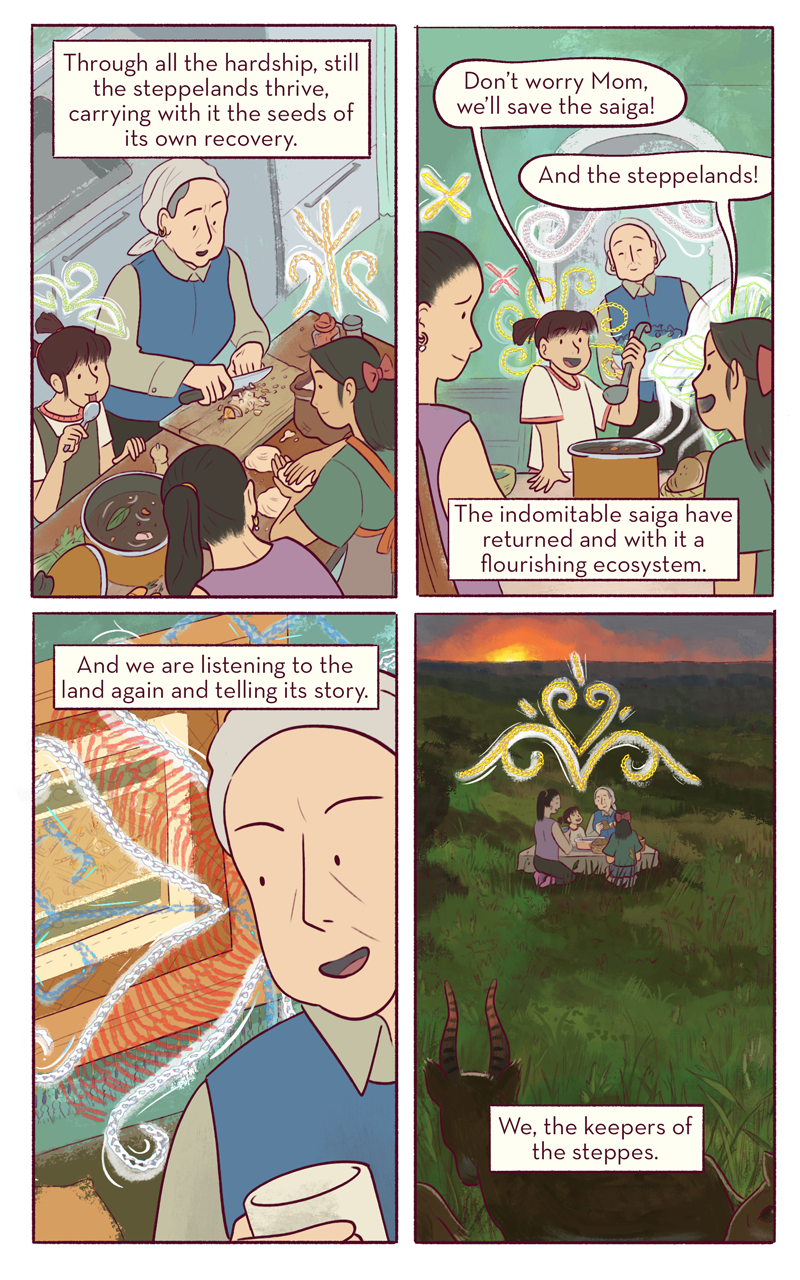
Baina: Don’t worry Mom, we’ll save the saige!
Elya: And the steppelands!
Narration: The indomitable saiga have returned and with it a flourishing ecosystem.
Narration: And we are listening to the land again and telling its story.
We, the keepers of the steppes.
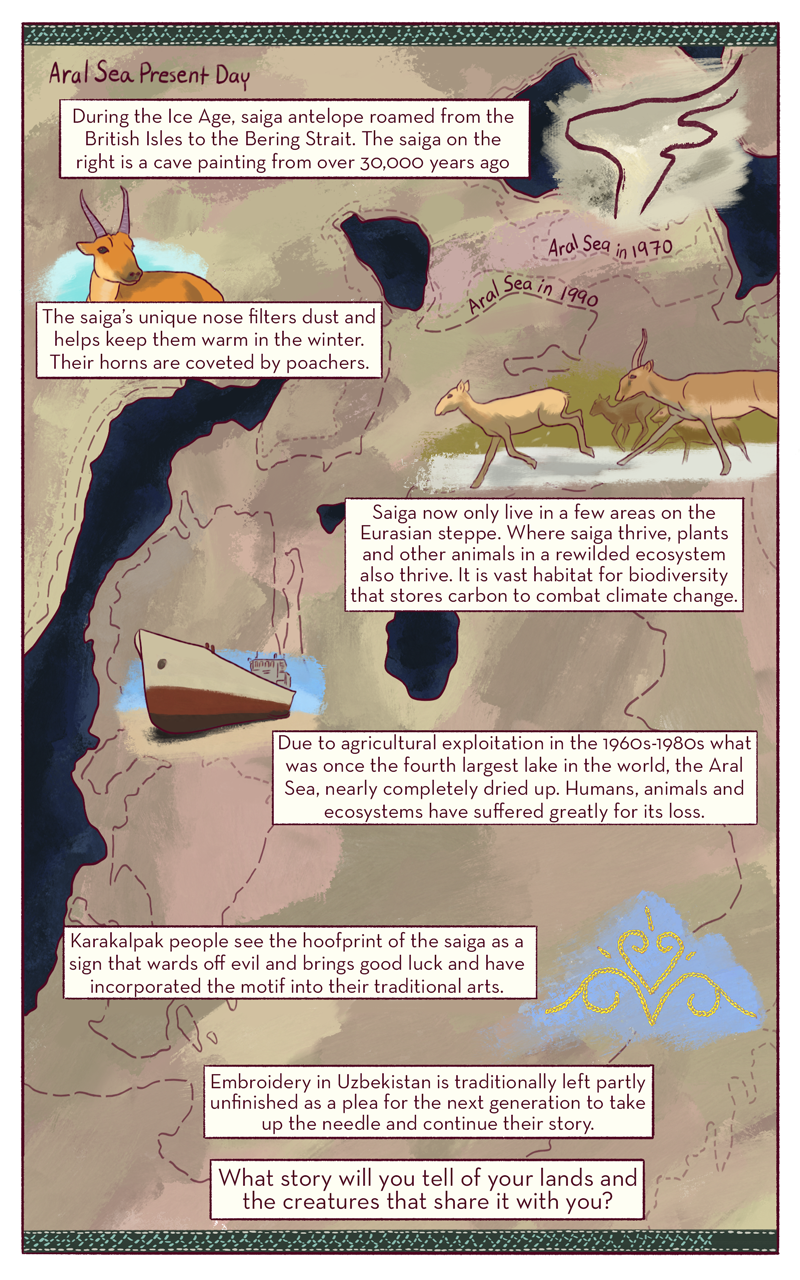
The saiga’s unique nose filters dust and helps keep them warm in the winter. Their horns are coveted by poachers.
Saiga now only live in a few areas on the Eurasian steppe. Where saiga thrive, plants and
predators in the ecosystem also thrive. It is vast habitat for biodiversity that stores carbon to combat climate change.
Due to agricultural exploitation, in the 1960s what was once the fourth-largest lake in the world, the Aral Sea, nearly completely dried up. Humans, animals and ecosytems suffered greatly for its loss.
KaraKalpaK people see the hoofprint of the saiga as a sign that wards off evil and brings good luck and have incorporated the motif into their traditional arts.
Embroidery in Uzbekistan is traditionally left partly unfinished as a plea for the next generation to take up the needle and continue their story.
What story will you tell of your lands and the
creatures that share it with you?
WHAT IS ‘NBS’ ABOUT THIS COMIC?
Of many benefits of nature-based solution, a key one is the protection of biodiversity—that is, saving the land and water that animals and plants need to live. Steppes are vast, open grassland plains, typically found in Eurasia, characterized by sparse trees, dry climate, and seasonal vegetation. Saiga are critically endangered antelopes native to Central Asia, known for their distinctive large, bulbous noses and migratory behavior. The loss of the steppes that endanger the saiga is primarily due to agricultural expansion, where vast areas of steppe have been converted into farmland, fragmenting their natural habitat. Overgrazing by livestock depletes the vegetation that saigas depend on, degrading the ecosystem. Infrastructure development, such as roads and railways, further fragments the steppe, disrupting the saiga’s migration routes. Climate change compounds these issues by altering precipitation patterns and causing extreme weather, impacting the availability of food and water. Poaching for saiga horns also reduces their population, making it harder for the species to survive in their shrinking habitat.
What can we do? Regular people can help protect the saiga by supporting conservation organizations focused on saiga protection through donations or volunteering. Raising awareness about the saiga’s endangered status, advocating for stronger anti-poaching laws, and reducing demand for illegal saiga horn products are also important steps. People can participate in citizen science projects to monitor saiga populations and promote habitat restoration efforts. Additionally, supporting sustainable agriculture practices that preserve steppe ecosystems can contribute to the long-term survival of the species.
LINKS FOR THE SCIENCE AND PRACTICE IN THIS COMIC >
- TNOC: Green Form and Function versus Green Nativism
- NN: Nature-based solutions for ecosystem restoration
- The Saiga Conservation Alliance Embroidery Initiative
- Resurrection Island Project
- Comprehensive social, environmental, and economic approach to saving the Saiga
- Kazach Steppe Restoration
- The Spirit of the Steppes Saving Central Asia
